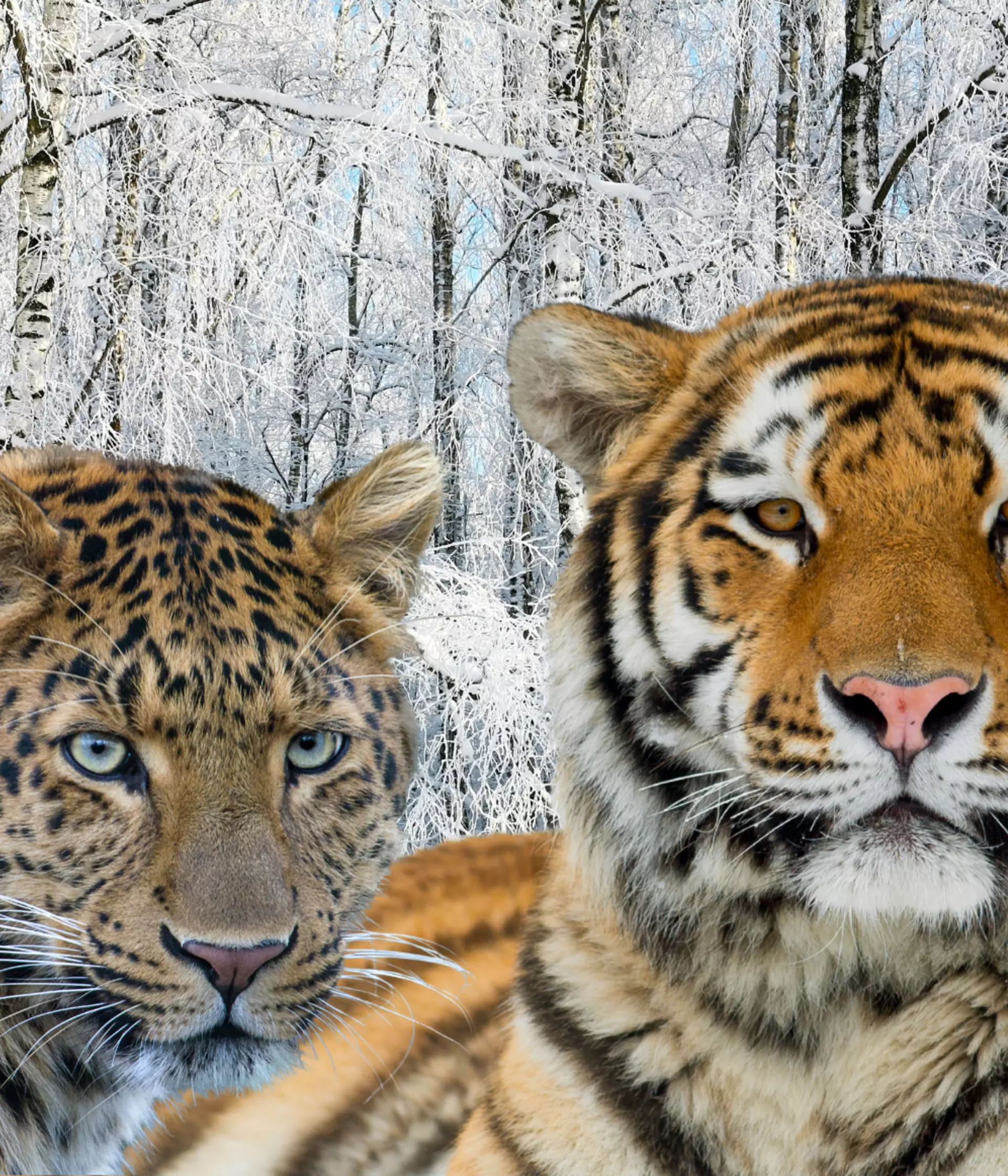WildCats Conservation Alliance conservation projects
Retaliatory killings, poaching and habitat loss are among the threats pushing Amur leopards and tigers to the brink. We’re working at the cutting edge, in partnership with Dreamworld Wildlife Foundation (DWF), as WildCats Conservation Alliance raising funds for conservation projects to support the recovery of these endangered species.
To date, WildCats has mobilised over £4m in support of 103 monitoring, protection, conflict resolution, firefighting and awareness-raising projects. With administration costs granted by DWF, the program ensures 100% of funds raised by the public and zoo community go straight to field conservation projects.
Visit the WildCats Conservation Alliance website for more information.
WildCats Conservation Alliance's Target Species
Amur leopard
The Amur leopard or Far Eastern Leopard (Panthera pardus orientalis) is one of the eight subspecies of leopard and currently the most endangered species of big cat in the world. Found in the Russian Far East and North East China, the latest population census taken in 2017 suggests there are only around 100 individuals left in the wild.
Status: Critically Endangered
Population: Around 100
Habitats: Temperate, Broadleaf, and Mixed Forests
Threats: Habitat loss, poaching, illegal wildlife trade, human-wildlife conflict, climate change
Tiger
Once occurring throughout central, eastern and southern Asia, tigers (Panthera tigris) now only persist in 7% of their historic range due to human pressures. Latest estimates suggest there are around 4,500 tigers remaining in the wild living in isolated islands of habitat, disconnected from other populations.
Across their range, both species face unrelenting pressures from poaching, retaliatory killings, and habitat loss. As top predators and keystone species, healthy tiger and amur leopard populations reflect the health of the environment. Conservation efforts to protect these two umbrella species therefore contributes to the preservation of the entire ecosystem.
Status: Endangered
Population: Around 4,500
Habitats: Tropical rainforests, evergreen forests, temperate forests, mangrove swamps, grasslands, and savannas
Threats: Habitat loss, poaching, illegal wildlife trade, human-wildlife conflict, climate change
WildCats Conservation Alliance’s impact
WildCats Conservation Alliance supports carefully chosen conservation projects in five priority countries within Asia that are dedicated to making a long-term difference to the future of Amur leopards and wild tigers. It funds projects that are run by respected conservation NGOs including the Wildlife Conservation Society (WCS), Fauna & Flora International (FFI), Phoenix Fund, ZSL, Freeland and Lingkar Inisiatif. All projects funded by WildCats Conservation Alliance are regularly and independently reviewed by leading conservation experts to ensure best practice and effective outcomes. This provides supporters with the confidence that their donations are being used effectively.
The projects funded by WildCats Conservation Alliance are locally appropriate and address key conservation issues in Indonesia, Russia, Thailand, China and Nepal. Project themes include, threat reduction activities, population monitoring, wildlife health monitoring, human wildlife coexistence, education and outreach and capacity building.
You can stay up to date with all the projects via the WildCats e-newsletter. Subscribe today
How WildCats Conservation Alliance works with zoos
Globally, zoos are visited by over 6 hundred million visitors a year – that is more than attend football matches. One of the strengths of WildCats Conservation Alliance is its links with the international zoo community. WildCats works with zoos across the world to encourage support for conservation action and engage visitors with the dedicated conservation work taking place across Asia. The alliance enables all zoos to pool their donations for greater impact.
Support WildCats Conservation Alliance
WildCats Conservation Alliance works with corporate supporters and members of the public to raise essential funds for wild Amur leopard and tiger conservation. Inspiring fundraising by fantastic supporters generates thousands of pounds each year from junior events, treks, bake sales, marathons, auctions and swims. Check out their website to see how you can get involved.
100% of donations received by WildCats Conservation Alliance are used to fund projects in the field.
People involved
Esther Conway manages WildCats Conservation Alliance at ZSL supported by Communication Specialist Amy van Gelder.
Partners and sponsors
Dreamworld Wildlife Foundation and Zoological Society of London
Get WildCats Conservation Alliance updates
Subscribe to the WildCats Youtube
Listen to the WildCats Pawcast
Urgent action to stop the devastation of critical species and habitats by helping people and wildlife live better together, is the only way to save the natural world we love and depend upon. That’s where ZSL comes in, and where you can play your part.
